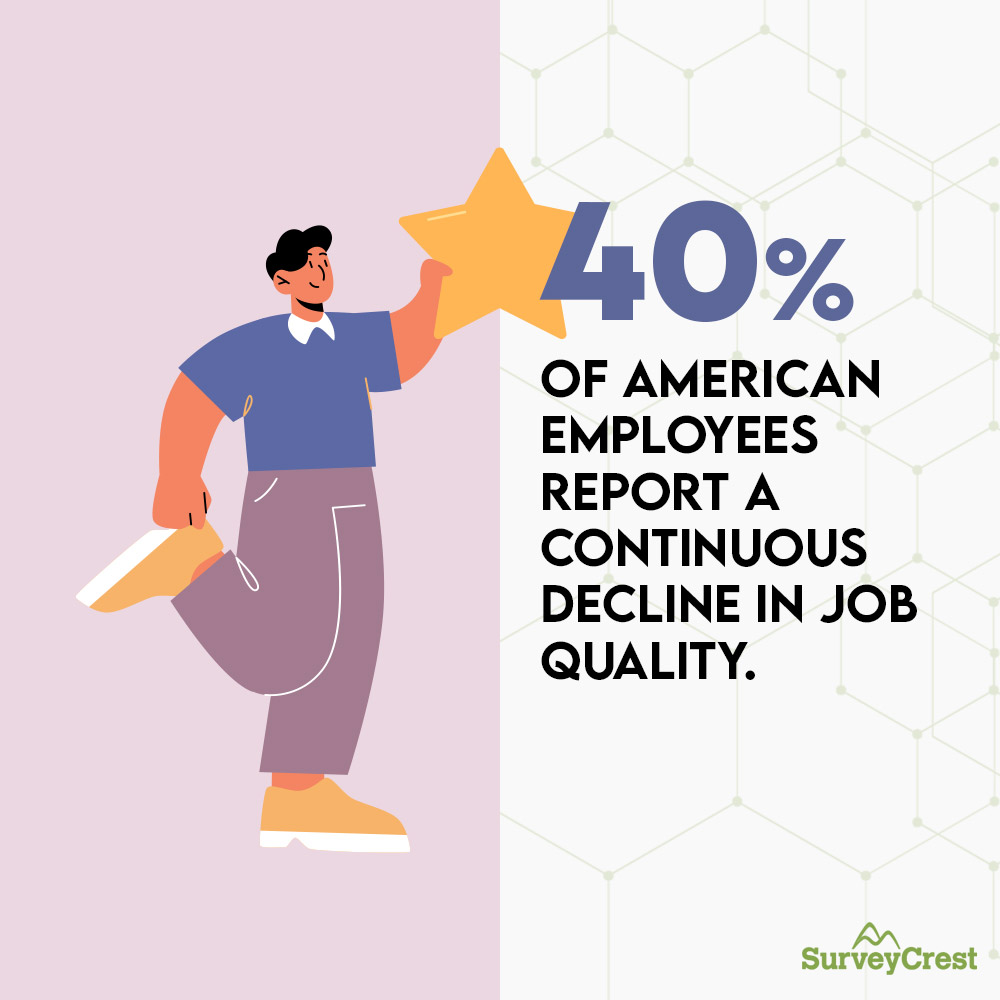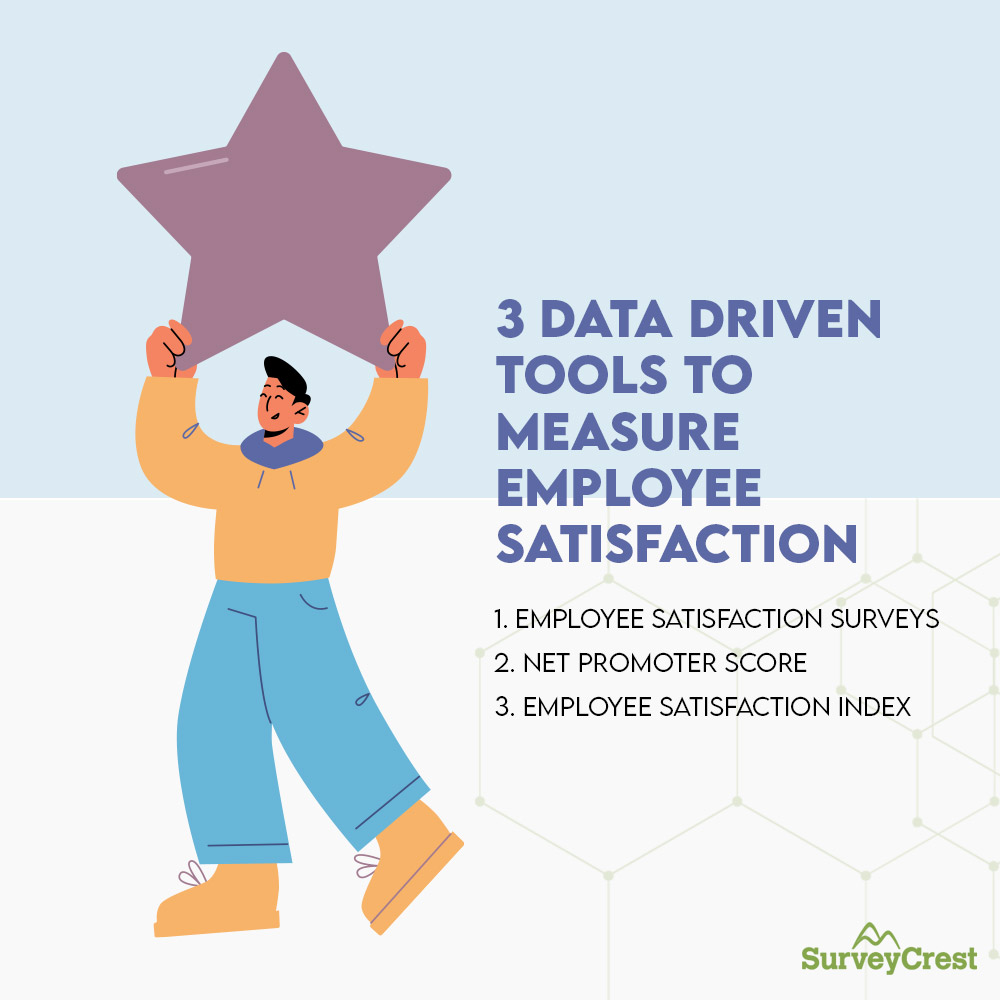
Featured Image: iStock/matdesign24
On the face of it, it sounds pretty simple.
“To run a successful business, you need to keep your employees happy”.
It makes total sense. Your employees are the people coming in regular contact with your client. If they aren’t happy, they won’t be able to make your clients happy. Unhappy clients rarely translate into big, fat profits or successful brands.
Yet, when we look at numbers or hear stories, it’s surprising to see how so few executives are willing to consider employee satisfaction an issue.
As a result, 40% of American employees report a continuous decline in job quality. If your customers are dealing with some of this 40% of staff, do you think they are leaving with a positive service experience?

Yeah, I didn’t think so either.
So, here is a detailed guide on some of the most result-driven ways to measure employee satisfaction. We also talk about the relationship between employee satisfaction and employee engagement. And figure out how one influences the other.
If employees feel happy in a job, they feel more energized and passionate to perform well, be more productive, and feel more positive. A sense of ownership takes place and highly motivated employees become promoters of the company/brand.
Conversely, if they aren’t happy with their pay, company culture, manager, or any other aspect of the job, this drastically reduces their engagement with the job and also results in customer interactions that are dispassionate at best, and problematic at worst.
Here are a few statistics that further elaborate how integral employee satisfaction is to their work quality:
Since these concepts are so closely connected, if you choose not to measure employee satisfaction, you give up on a whole wealth of data and insights to explore how you can improve your growth as well as your profits – because one thing directly impacts the others.
While employee satisfaction and employee engagement are so closely connected, their relationship is more complex than meets the eye.
Again, on the surface, the correlation seems pretty direct.

But is it really?
If you are a fan of the TV show, The Office, Stanley is the perfect character to shatter the myth of a linear relationship between employee satisfaction and employee engagement.
A highly satisfied employee does not always mean a highly engaged employee. Yet, for an employee to be engaged, satisfaction with the job must exist, at some level. You can’t be fully engaged at a job that you hate.
In that same vein, you don’t have to be in love with a job or be highly enthusiastic about it to perform reasonably well at it.
So, to navigate this complex relationship, it’s important to understand and accept that while there are going to be complacent employees in your staff that feel satisfied at their jobs, the majority of the team requires efforts from your end to feel passionate and energized at their work.
If you aren’t doing enough to keep these employees satisfied, happy, and motivated, you might be letting your star employees suffer, and eventually leave you.
But how do you figure out which are complacent employees and which have the potential to do something great?
Here are 3 data-driven tools to gauge employee satisfaction levels so you can get to the next step of creating programs and policies that keep employees highly engaged.

From data-driven tools (surveys + formulas) to more flexible feedback strategies, we are sharing 3 successful ways to confidently measure how satisfied your employees are with their jobs.

Image Source: iStock/sefa ozel
Anonymous employee satisfaction surveys have been in vogue for ages. They give you the answers and the insight that your staff just cannot – no matter how close you think you are with your team.
With employee satisfaction surveys, you can ask about general satisfaction levels, or something more specific – their pay scale, for example. As long as you have asked the right questions, the results of your surveys will leave you to the origin of the problem or at least to the place where things took a turn for the worst.
Even if things aren’t that bad at your company, these surveys help you keep your finger at the pulse and ensure you remain ahead of the bunch in terms of being the most attractive employer in your field, the most engaging, and the one who pays well.
Here are a few best practices to follow when designing your employee satisfaction survey:

Image Source: iStock/syahrir maulana
Abbreviated as eNPS, the employee net promoter score was designed to replace lengthy, time-consuming employee surveys. With this net score, you can get to the gist of the matter with one simple question:
It’s genius if you think about it.
While we may suffer at a workplace to pay our bills, we won’t recommend such a place to anyone we love. So if most of your team members have chosen not to recommend your company to their friends and families, you know major changes need to take place.
Employee Net Promoter Score is easy to get. Ask your employees to answer this question on a scale of one to ten – least likely to most likely. To calculate your score, here is the formula:
eNPS = % of promoters (answers in 9 or 10) – % of detractors (answers that score from 0 to 6)
You will get a score ranging anywhere from -100 to +100. Positive scores mean all is well. If you start veering towards lower/negative scores, you know it’s time for some overhaul.

Image Source: iStock/takasuu
In addition to eNPS, we also have ESI: employee satisfaction index.
Using the Likert scale, employees answer on a scale of 1-10, again, from least satisfied to most satisfied.
You can use ESI to measure the overall job satisfaction levels or just a specific part of it – it is up to you. The idea is to keep the questions short, to the point, and the results more easily available. You can ESI as part of your larger employee satisfaction survey or you can use it in isolation and create its own index.
The formula to calculate ESI is as follows:
ESI= [((question mean value ÷ 3) – 1) ÷9]*100
Your result will range from scores between 0-100 where higher scores mean a more highly satisfied team versus low scores indicating a dissatisfied workforce.
While these 3 methods give you a wealth of quantitative data to base your HR strategies on, there are several qualitative methods that you can also employ. Employee suggestion boxes, employee performance reviews, and 1-on-1 conversations are a few ways to understand what your employees like and dislike.
Along with a bit of homework – such as researching salaries in your area to ensure your remuneration is competitive, revising HR policies to create safe work environments, and talking with other industry leaders on how they are keeping their staff happy – you can create cohesive and wholesome strategies that keep your employees satisfied, engaged, and inspired.
Kelvin Stiles is a tech enthusiast and works as a marketing consultant at SurveyCrest – FREE online survey software and publishing tools for academic and business use. He is also an avid blogger and a comic book fanatic.